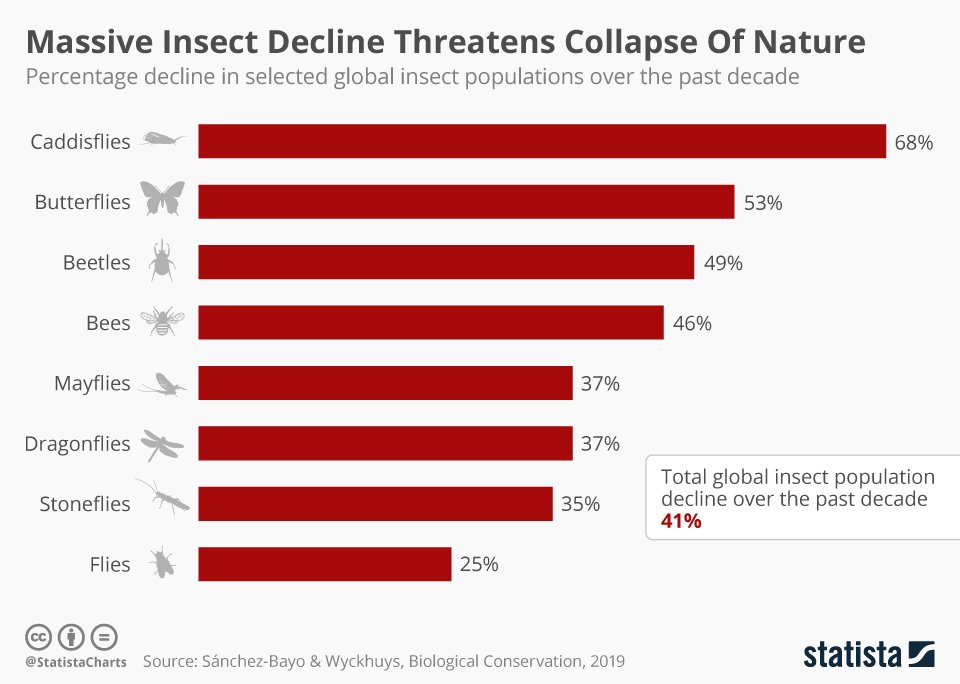Which Easy Care Evergreen Shrubs Will Hide My Ugly Foundation?
Reader also wants to support boyfriend’s beekeeping. The first step is to avoid killing them.
Honey bee on inkberry holly (Image: Ricky Layson, Ricky Layson Photography, Bugwood.org)
Dear Avant Gardener, The foundation of our house is ugly! What are some beautiful shrubs we can plant around the house to hide three feet of “decorative” concrete block while also helping pollinators? My boyfriend will be bee-keeping next year so we want to do everything to help the bees. While a coat of paint will make a difference, it’s visually boring and will get dirty as we approach mud season. The winters up here are rough (hardiness zone 5a) and the summers dry, and we have lots of deer. It seems impossible to get plants that are deer resistant but that would be a bonus! — Feeling Exposed, Roxbury, NY
I’m so glad you asked this question because I can use a favorite cartoon to close out the column! You also raise a crucial issue: Many plants sold in nurseries contain neonicotinoids or other pesticides toxic to honey bees.
In nursery production, plants — even those highly attractive to pollinators — are commonly treated with pesticides. Growers are very sensitive to consumer intolerance for plant damage, and sometimes states mandate pesticide applications to prevent the spread of certain pests. Consequently, it is no surprise that researchers are finding toxic levels of insecticides in nursery plants. So, remember that the bee and butterfly pictures on the plant tags only tell half the story — whether a plant is attractive to pollinators. You will still need to figure out whether a plant is free of harmful pesticides, a task that takes some time and effort. — Xerces Society
So, the most important guideline for your shrubs — and, really, the plants we all buy — is to avoid buying plants grown with neonicotinoids and similar pesticides. This requires vigilance. See more in “Why, How, Wow!” below.
Design solutions for ugly foundations
So, what’s a girl to do with an ugly foundation? I suggest you minimize and distract from, as well as screen, your foundation. This way you’ll avoid weighing down your house with a dull (and expensive) skirt of dozens of evergreens. Here’s how this will work:
Minimize: Paint the foundation blocks a receding color like taupe that complements your house and won’t appear dirty.
Screen: Identify the foundation sections you will see in the course of a typical winter day. For example, what do you see as you walk from your car into your house? As you drive in? Strategically screen these areas with native evergreen shrubs that will cover your foundation but not dwarf your house.
Distract: Identify those sections of the foundation you’ll see in the summer, when you spend more time outside. Around these areas, such as the patio, plant native perennials that will distract from the foundation while providing an important summer nectar source for the honey bees.
Deer-resistant evergreen foundation shrubs
Your ecoregion is a better indicator than your USDA hardiness zone of whether a plant will thrive in your yard. Plants native to your ecoregion evolved in your tough winters and dry summers. Several small to mid-size evergreen shrubs that attract pollinators and not deer are native to your Catskills Transition ecoregion.
My top recommendation is Mountain laurel (Kalmia latifolia). I love its showy spring blossoms and gnarly trunks. Group it with Inkberry holly (Ilex glabra), Northern bayberry (Morella pensylvanica), and Sheep laurel (Kalmia angustifolia).
In place of mulch, add more pollinator value by underplanting the shrubs with evergreen creeping dewberry (Rubus hispidus), wintergreen (Gaultheria procumbens), and partridge berry (Mitchella repens). Ferns are also deer resistant and beautiful around foundation plants.
A final note: These plants evolved in the northeast’s acid soil. However, concrete leaching around your foundation may have made the soil more alkaline. Test it through your local land grant university (Cornell) and discuss the results with your native plant nursery before finalizing your shrub selection.
Then get buzzing!
— The Avant Gardener
Why, How, Wow!
Why?
The global insect population declined 41 percent in a decade, leading scientists to talk about a sixth great extinction, comparable to the one that killed dinosaurs. Why is this important?
[Insects] are to terrestrial food chains what plankton is to oceanic ones. Without insects and other land-based arthropods, E.O. Wilson, the renowned Harvard entomologist, and inventor of sociobiology, estimates that humanity would last all of a few months. — The Guardian
The primary drivers of insect die off are habitat loss and degradation, pesticides, and climate change; other factors include disease, invasive species, and light pollution.
Source: StatistaCharts
How
Replacing lawns with native plants can help turn the tide of insect die-off by creating habitat and reducing pesticide use. However, just because a plant is native or “pollinator friendly” doesn’t mean it’s safe for honey bees and other beneficial insects. To ensure that the nurseries you buy from do not use neonicotinoids or other pesticides, ask, read labels, or search websites. For more information, see “Buying Bee-Safe Plants” by the Xerxes Society, the global invertebrate conservation organization.
Wow!
Evergreen, deer-resistant Mountain laurel (Kalmia latifolia) is native in North America from Indiana to Louisiana eastward. One of our most beautiful flowering native shrubs, it also attracts bees and hosts caterpillars.
Mountain laurel blooms in early summer
Related Resources
Interested in pollinator-friendly plants? See Xerces’ list for your region.
Want to know your ecoregion and which plants are native there? Search for your town at https://bplant.org/ecoregion_locator.php, click on your specific location in the map, you’ll see your ecoregion on the right.
Deer damage got you down? I recommend that New England and Mid Atlantic residents get Deer-Resistant Native Plants for the Northeast.





